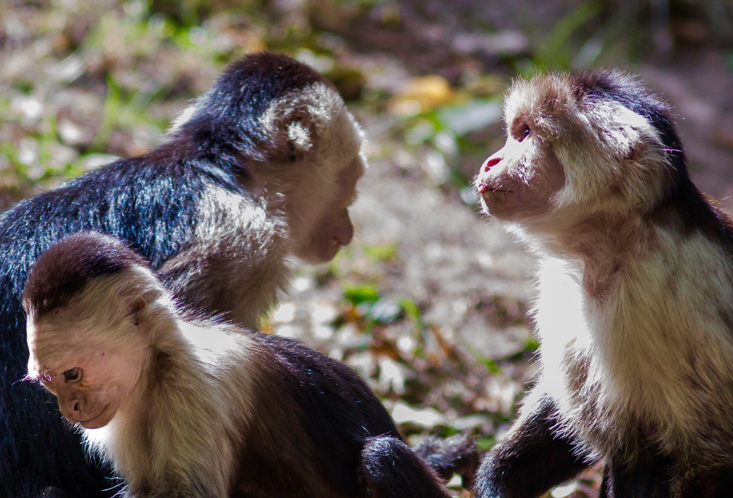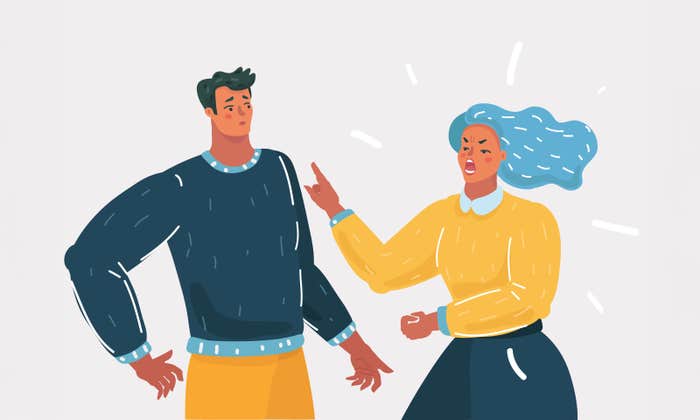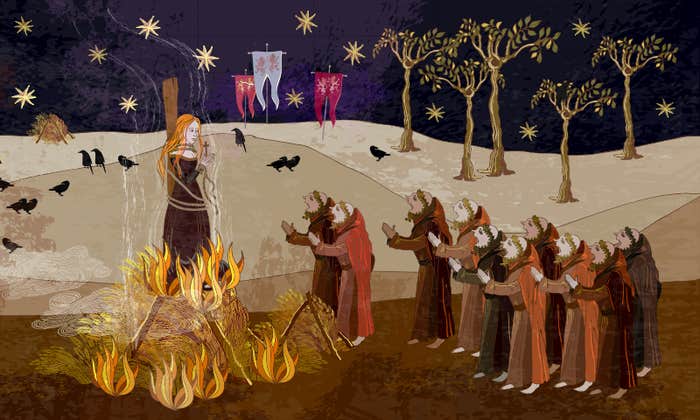Did the ancient Athenians invent democracy? Or did bugs have it way earlier than the Greeks? Cornell entomologist Tom Seeley knows which option he’s voting for.
Honeybees regularly split from their mother colony. Seeley wondered, with tens of thousands of bees in a swarm, how do they reach agreement? His answer: simple-majority democracy.
In his 2010 book Honeybee Democracy, Seeley described how bees intending to strike out on their own first send scouts in all directions to collect information. On their return, these early scouts buzz and twirl to recruit more scouts. Some gain fans whereas others lose them. Newly deciding scouts go out to look for themselves. After the majority of scouts (which number in the hundreds) have converged on one opinion, the entire swarm takes off for its promised land.

Bees are not alone in using simple-majority rule—Tibetan macaques do it too.1 In 2014, my colleagues and I were studying how a group of 12 adult macaques coordinated their collective movements. We noticed that once three or more of them ganged up together, the entire group would often follow suit. The success rate in getting the group into action increased with the number of initiators—those who started the process. When the initiators numbered seven or more, exceeding a simple majority, the success rate reached its maximum: 100 percent.
Democracy in collective decision-making has also been observed in African buffaloes, red deer, baboons, and pigeons.2 Even single-celled bacteria make collective decisions based on a democratic process known as quorum sensing. Their genes control some aspect of their behavior, like how mobile or virulent they should become, based on how many of their bacterial comrades are already engaging in that behavior. Similar democratic processes are also used by cockroaches and other swarming insects.
The presence of the ignorant not only failed to undermine the voting of the informed majority, it actually fortified it.
Apparently, the lofty principles of our democracy may have a straightforward biological origin, and can emerge without any elaborate design. Simple-majority democracy can safeguard the will of the majority, and, at least judging by the frequency with which its found in nature, seems to be one of the best ways of resolving conflicting interests among individuals who have to stick together—whether it’s a swarm of bees or a band of monkeys. It’s no wonder a motley crew of gregarious species, including humans, have evolved to use this same wisdom in making collective decisions.
This remarkable fact is more than a curiosity—it can also be a useful model. It offers the opportunity to evaluate how robust democracy is against deviations from simple-majority rules.
Not all voters are well-informed. Some may be ignorant, incompetent, or uninterested in the common good. How can a simple majority work in this case? It’s an issue that has concerned thinkers ancient and modern, including Plato, Thomas Hobbes, and John Stuart Mill. Plato was almost paranoid about the prospect of electing fools who are narrowly self-interested and have no philosophical vision. (Today we have plenty of examples.) He decried democracy as nothing more than mob rule, and preferred instead an aristocracy led by a wise “philosopher king.” Concerns like this led to the practice of voter literacy tests, which were only ditched in the United States in 1975.
But will ignorant voters really jeopardize simple-majority democracy? By looking at animals, we get the hint of an answer. Iain Couzin and colleagues at Princeton University used food to train two groups of golden shiners (a small fish) to swim from one end of a tank to either a yellow or a blue target located on the other end.3 They then released the two groups of trained fish into a group of naïve fish. The naïve fish tended to follow whichever informed group had more members—the majority. If there were more informed fish pursuing the yellow (or blue) target, the naïve fish also pursued it. What’s more, the more naïve fish there were, the stronger the trend became. So the presence of the ignorant not only failed to undermine the voting of the informed majority, it actually fortified it.
Couzin’s fish were binary, however: They were either entirely wise, or completely witless. What if there were manipulators—cheaters who spin false information to lure naïve voters?
Even single-celled bacteria make collective decisions based on a democratic process.
Here, too, animal democracy is fairly robust. Many animals have evolved ways to judge the quality of the information they’re receiving. Tibetan macaques, for example, take a message more seriously if it is sent by a close comrade than by an estranged peer. Marmots can learn to distinguish between reliable and unreliable warning calls.4 The commonality of these methods is that they work in small-scale, close-knit societies—a troop of monkeys or a colony of marmots, where everybody knows everybody else. In a large society made of a vast number of strangers, would the result be different?
What if we can take Couzin’s fish and Seeley’s bees as our models? In these models, we can treat informed voters on each side of an issue to be equally vociferous, with equal access to uninformed voters and to each other. The models predict that uninformed voters would follow whichever group of informed voters is larger, setting up an ideal backdrop for simple-majority rule.
But what happens if a group of informed voters is given tools that grant them influence out of proportion to their numbers? This is exactly the ability that has been granted by media since the dawn of the printing press, and has developed further with the advent of radio and television. Now, in the digital age, it is perhaps stronger than ever before. Power has shifted from voters to the manufacturers of media tools, and to those who wield them best. Those tools can even be manufactured and used by third parties that are not part of the voting community at all, like the Russian government, which has attempted to influence elections in the U.S., France, Germany, and the Netherlands.

We could in principle defend against this manipulation by following only reliable news sources with strict journalistic practices. But that is easier said than done. Computational social scientist Walter Quattrociocchi led a team that analyzed how people use Facebook in Italy.5 They compared over a million uses of two kinds of information—fact-based science and technology reports with explicit sources of origin (such as “cargo ships are among the major greenhouse gas emitters”) versus conspiracy theories with no traceable source information (such as “tail gas from airplanes contains traces of Viagra”). They found, disturbingly, that people visited websites with conspiracy theories three times as often as those with reliable science and technology reports.
Another potential response is education: Quattrociocchi’s team also found that less educated people tend to be more likely to fall for fake news. But making all voters informed voters seems like a too-ambitious goal—there will always be disparities in information among voters.
When it comes to manipulating information, animal models are not silent, but not particularly helpful either. There is evidence that animals do promote false information in various ways. For example, nesting sticklebacks can protect their eggs by misleading their cannibal peers away from their nests. Male bowerbirds can create visual illusions to impress females, and monkeys and apes often use delusive techniques in hunting or gaining social status. But we don’t know how this kind of tinkering affects simple-majority democracy in animal communities, and there are no obvious parallels to the sheer scale of media use and manipulation that we humans have developed.
For centuries, Plato’s cynicism about democracy has been seen skeptically. But was he simply ahead of his time?
Lixing Sun a biologist and lateral thinker who writes about science and society. He is the author of The Fairness Instinct, among other books. Follow him on Twitter @LSun5.
References
1. Wang, X., et al. Collective movement in the Tibetan macaques (Macaca thibetana): Early joiners write the rule of the game. PLoS One 10 e0127459 (2015).
2. Conradt, L. & Roper, T. Consensus decision making in animals. Trends in Ecology and Evolution 20, 449-456 (2005).
3. Couzin, I.D., et al. Uninformed individuals promote democratic consensus in animal groups. Science 334, 1578-1580 (2011).
4. Blumstein, D. A Groundhog Day lesson about fake news. “This View of Life” evolution-institute.org (2017).
5. Quattrociocchi, W. “Inside the Echo Chamber” Scientific American 316, 60-63 (2017).
Lead original image: kosolovskyy / Shutterstock


























